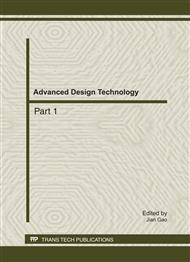[1]
H. Benaissa, B. Benguella, Effect of anions and cations on cadmium sorption kinetics from aqueous solutions by chitin: experimental studies and modeling, Environ. Pollut. 130 (2004), pp.157-163.
DOI: 10.1016/j.envpol.2003.12.014
Google Scholar
[2]
M. Ajmal, A.H. Khan, S. Ahmad, Role of sawdust in the removal of copper(II) from industrial wastes, Water Res. 32 (1998), pp.3085-3091.
DOI: 10.1016/s0043-1354(98)00067-0
Google Scholar
[3]
Ozer, D. Ozer, The adsorption of copper(II) ions on to dehydrated wheat bran (DWB): determination of the equilibrium and thermodynamic parameters, Proc. Biochem. 39 (2004), pp.2183-2191.
DOI: 10.1016/j.procbio.2003.11.008
Google Scholar
[4]
G. Donmez, Z. Aksu, The effect of copper(II) ions on the growth and bioaccumulation properties of some yeasts, Proc. Biochem. 35 (1999), pp.135-142
DOI: 10.1016/s0032-9592(99)00044-8
Google Scholar
[5]
G. Crini, Recent developments in polysaccharide-based materials used as adsorbent in wastewater treatment, Prog. Polym. Sci. 30 (2005), pp.38-70.
DOI: 10.1016/j.progpolymsci.2004.11.002
Google Scholar
[6]
Y.S. Ho, Removal of copper ions from aqueous solution by tree fern, Water Res. 37 (2003), pp.2323-2330
DOI: 10.1016/s0043-1354(03)00002-2
Google Scholar
[7]
Ahmed, S. A.. Batch and fixed-bed column techniques for removal of Cu(II) and Fe(III) using carbohydrate natural polymer modified complexing agents. Carbohydrate Polymers. 83(4), (2011), pp.1470-1478.
DOI: 10.1016/j.carbpol.2010.09.051
Google Scholar
[8]
X.S. Wang, Y. Qin, Equilibrium sorption isotherms for of Cu2+ on rice bran, Proc. Biochem. 40 (2005), pp.677-680.
DOI: 10.1016/j.procbio.2004.01.043
Google Scholar
[9]
T. Vaughan, C.W. Seo, W.E. Marshall, Removal of selected metal ions from aqueous solution using modified corncobs, Biores. Technol. 78 (2001), pp.133-139
DOI: 10.1016/s0960-8524(01)00007-4
Google Scholar
[10]
YANG Lian-min, CHENG Wenna, Journal of Guangxi Teachers Education University (natural science edition), 25(3)(2008), pp.73-77
Google Scholar
[11]
S. Lagergren, About the theory of so called adsorption of soluble substances, kungliga Svenska Vetenskapsakademiens, Handlingar, Band 24, No. 04 (1898), pp.1-39.
Google Scholar
[12]
Y.S. Ho, J.C.Y. Ng, G. Mckay, Kinetics of pollutants sorption by biosorbents: review, Sep. Purif. Methods 29 (2000), pp.189-232.
DOI: 10.1081/spm-100100009
Google Scholar


